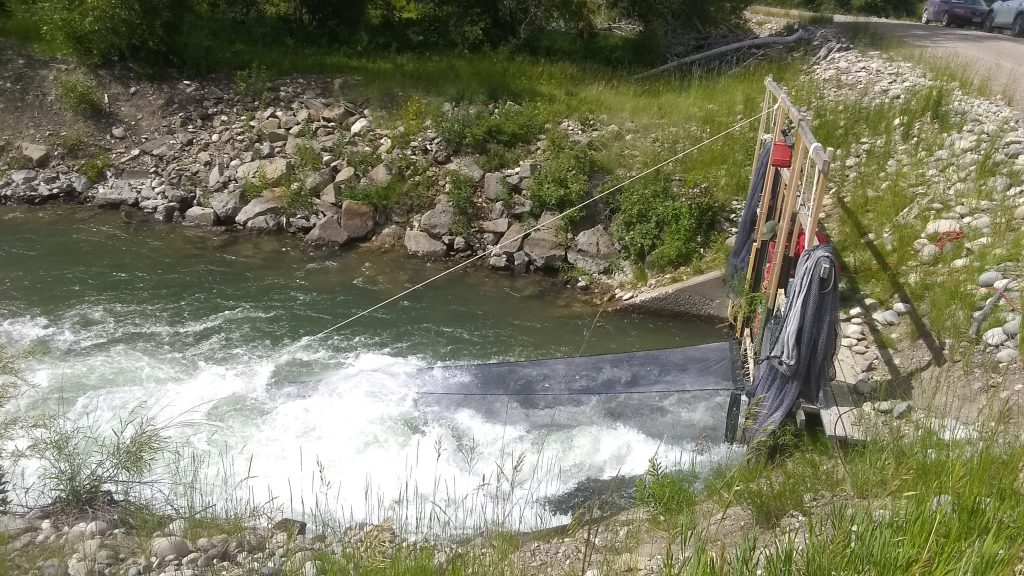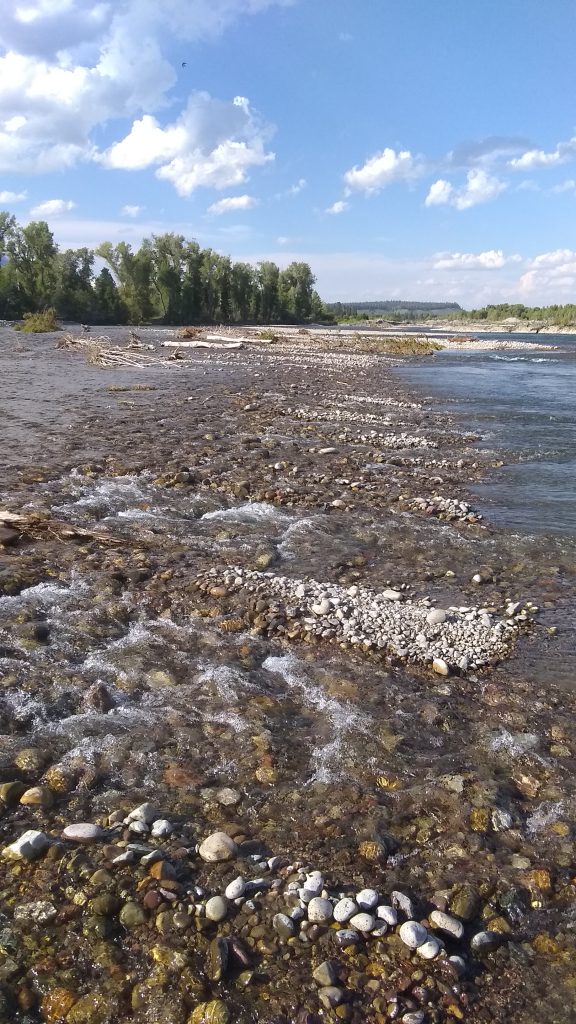The words “irrigation canal” conjure images of concrete systems and dirty water, but in Jackson, Wyoming, everything is touched by the finger of King Midas—at least upon first glance. Beneath a backdrop of golden fields, snow-capped peaks, grazing elk, and bright blue skies, you are liable to mistake irrigation canals for spring-fed creeks: cold, clear, and clean. Look in the water long enough and you will surely see the flash of a Snake River cutthroat trout moving downstream. But not all is as well as it seems.

During the summer of 2020, I had the opportunity to work for Trout Unlimited’s Snake River Headwaters Initiative. At the heart of this internship was a study on fish entrainment—unintended fish trapping—in the irrigation ditches criss-crossing Teton County, Wyoming. The verdant illusion of ranches, green grass, and snowy ski slopes is partially supported by water diverted from the Snake River. While the system of headgates (structures controlling the amount of water diverted from the source river) and canals in Jackson Hole is highly successful in delivering water to the users who rely on it, this same system, and many like it across the country, inadvertently pulls fish from rivers and tributaries to their untimely demise.
For decades, anecdotal evidence suggested substantial numbers of fish were pulled downstream with no pathway for escape. Radiotelemetry data from a 2019 Grand Teton National Park (GTNP) internal report suggested that 97% of fish pulled through the Granite Creek headgate were “removed” from the Snake River population, rendering them fertilizer or easy prey for our many predators. While the dismal outcome of entrainment for individual fish was well-known, the possibility of population-level harms for native fish, such as Snake River fine-spotted cutthroat trout, bluehead suckers, Utah chub, and Paiute sculpin was thought to exist, but still unproven or backed by data.

To help evaluate the scale of fish entrainment and ultimately justify policy and technological solutions, I joined a collaborative project between Trout Unlimited, GTNP, and the Wyoming Game and Fish Department monitoring the number of fish entering the Granite Supplemental Ditch over time, or the entrainment rate. As most fish fail to observe our 9-5 notion of “working hours,” our sets often took place in the middle of the night with the aid of headlamps. Over the course of the summer, we took turns hoisting nets from beneath the headgate, nets that filtered anything larger than a quarter from the water flowing downstream.
Amidst the leaves, branches, and the occasional set of car keys from unfortunate upstream river rafters, our nets teemed with fish. While many perished in the tumbling water, thousands of others survived, ranging from the young of the year, half-inch speckled dace fry to 23-inch bluehead suckers and “trophy” cutthroat trout. Under the light of our headlamps and with as much precision as we could will into our cold fingers, my coworkers and I identified, measured, and recorded the fish. We would then transport the fish back into the Snake River before repeating the process.

While proper estimates on the annual entrainment rate of the Granite Supplemental Ditch are publicly unavailable, I held, identified, measured, and released thousands of fish doomed to the swift and increasingly shallow waters farther down the canals. Fortunately, the Upper Snake River’s cutthroat trout population remains healthy and stable in the Upper Snake River (though limited population data for non-game species, such as the leatherback chub and the bluehead sucker, cast an air of uncertainty on the overall ecosystem health). But under the threat of a rapidly changing climate and growing water demands, the consequences of tens of thousands of fish lost from a single irrigation canal each year begin to mount.

The experience of connecting to the flow of life on one of the great rivers of the West was a worthwhile experience on its own, but some of the project’s concrete goals have also been achieved. Our data helped inform and justify a redesign of the Granite Supplemental Ditch in Grand Teton National Park. The costs of a future fish screen installation can now be more easily justified. Ranchers controlling the headgates have a clearer view of Jackson’s entrainment problem and can now become allies.
Interns counting fish have not solved all the problems with water use and entrainment in the Granite Supplemental Ditch, and we never will. As a result of this project, however, I hope that I can someday lean over the cold, clear, and idyllic irrigation canals of Jackson Hole and never see the flash of a Snake River cutthroat trout moving downstream.
—

Bryce Powell, Western Resources Fellow and Research Assistant |Bryce is a Master of Environmental Management candidate at the Yale School of the Environment specializing in Ecosystems and Land Conservation and Management. Work and play in the mountains and deserts of the American West, including his home state of Colorado, provide a foundation for Bryce’s studies at UHPSI. He is interested in the management of public lands in the American West, particularly through stakeholder engagement, conflict resolution, and the inclusion of historically marginalized perspectives. Bryce holds a Bachelor of Arts degree in Environmental Studies from the University of Colorado Boulder. See what Bryce has been up to. | Blog
